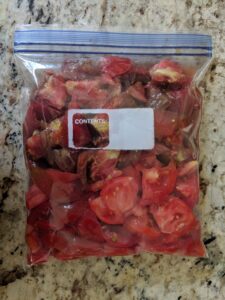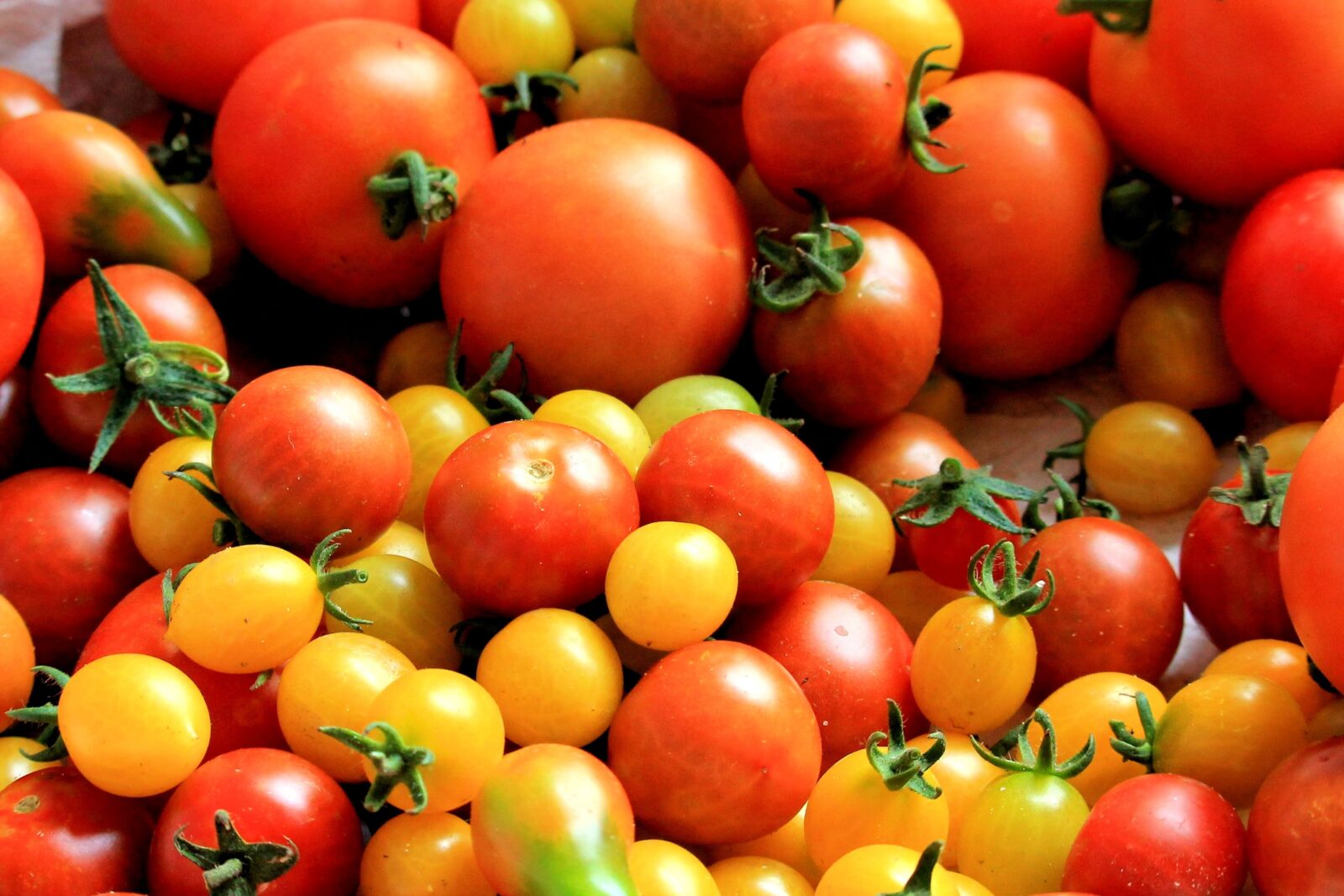As the summer season kicks into high gear nature’s bounty truly explodes. Those hot temperatures and mild nights mean that many “fruits” finally come into their own. When tomatoes and peppers begin to ripen, they do so in a big way. All of a sudden you have more squash, peppers, tomatoes and eggplant than you know what to do with. My family and I love fresh tomatoes but even we find ourselves challenged to eat them at their peak and before they start to spoil. Fortunately, there are options to preserve some of that in-peak goodness for future use.
Preserving produce at their peak means you can capture that one-of-a-kind taste, and nutrition, buying local gives you. A little planning now and you can enjoy that flavor and nutrition in your dishes now and for weeks (and even months) to come. If you want to learn more about ways to preserve your in-season bounty there are many resources available. Start by reading below and visit the National Center for Home Food Preservation at https://nchfp.uga.edu/ for other valuable free resources.
Preserve taste and texture through proper short-term storage

You can extend the life of your produce, for the short term, by storing it properly. Most of us get the produce and shove it in the fridge produce drawers. Most fridges have 2 drawers and so everything you bring home ends up mixed in together regardless of their storage preferences. Some fruits (and vegetables) do not like the cold at all and lose their texture and taste quickly, like tomatoes. Some need high levels of humidity while others do better in lower humidity. Most produce releases gases as they ripen that affect others, causing them to spoil prematurely. The first step to making your produce last longer is to know how it should be stored. Here are some thoughts on short term storage to preserve taste and texture of foods
- Fresh tomatoes should never go in the fridge because the texture and taste suffer. Keep them on the counter and eat them fresh (whole wheat English muffin with cream cheese and tomato is a great way to start the day). Cherry tomatoes make a great snack. If these summer goodies are on display and easy to reach for, they disappear fast.
- Potatoes, onions, scallions and garlic like it cool, dry and dark. Do not wrap in plastic bags as they need to breathe (let off those gases that when trapped will make them spoil faster). Make sure to NEVER store them near each other as they will rot, so potatoes in one corner of the basement (or cupboard) and onions and garlic in another (or a different cupboard far away).
- Melons and stone fruit do better on the counter than in the fridge but last longer in cool conditions. Keep the daily supply visible and ready to eat in the kitchen. Store extras in the cooler basement.
- Never store fruit and vegetables in the same storage drawer. The gases emitted by fruit will lead to premature vegetable spoilage.
Check out these links for additional information on proper storage of fruits and vegetables from Bon Appetit https://www.bonappetit.com/story/fruits-and-vegetables-you-shouldnt-be-refrigerating and The Spruce Eats https://www.thespruceeats.com/how-to-store-vegetables-4687049
Cooking extends the shelf life of delicate produce

If some of your produce is at its peak and you cannot see a way to consume it before it starts going over, cook it. Cooking produce allows you to extend the shelf life by a few days. You will generally need to refrigerate it once cooked, to prevent spoilage. Having precooked items in the fridge does give you more flexibility and buys you more time to eat it. For example, if you have a ton of fresh tomatoes, transform them into sauce. Make a big batch and you will have the basis for pasta dishes, pizza or eggplant parmesan, just to name a few. You can store it in the fridge and use as is or preserve it further by freezing. Freeze sauce in small freezer bags or containers so you thaw out only what you need later.
Similarly, you can transform peppers by roasting, peeling and cutting them up. Drizzled with some olive oil they can be enjoyed in dishes straight from the fridge or frozen in small containers for later. Greens such as Swiss chard, spinach and broccoli rabe can be cooked then used in other dishes later in the week, cutting down on prep and cook time later. These more delicate veggies yield better results later when cooked or at least blanched before freezing (based on my personal experience).
Freezers provide an easy way to preserve local bounty

Of course, in some cases cooking before freezing is not necessary. You can freeze some fresh produce with minimal prep. You can cut up tomatoes and freeze them directly without any other prep. If you are short on time, you can even freeze them whole (after blanching and peeling), just make sure to place them in freezer safe bags. Peppers can be frozen as well just cut into recipe ready size and freeze in small freezer bags.
Fruit can be frozen and enjoyed for months. Small fruit can be frozen whole while larger fruit (or those with cores or pits) should be cut up after peeling. Freeze on a cookie sheet, before transferring to a freezer safe bag, to prevent clumping. For more ideas check out this article from Taste of Home https://www.tasteofhome.com/article/can-you-freeze-raw-vegetables-and-fruits/ and of course the National Center for Home Food Preservation.
Can it to preserve food for months of enjoyment

I have to be honest; I am a canning novice. While I understand the basic principles from watching (and assisting) my parents it is not something I have done by myself. That said, my mom insists it’s easy and that I should take the plunge so I am determined to give it a go. Canning has the advantage of not requiring much in the way of specialized temperature-controlled storage space (aka freezer). Dark, constant temperature environments (like a basement) tend to be preferred storage locations (heat and sunlight reduce the life of preserved foods). If you want to learn more about canning (as well as smoking, drying, fermenting and pickling) check out the website of the National Center for Home Food Preservation (https://nchfp.uga.edu/ ) and enjoy.
Enjoy seasonal food now and later
There are many ways to enjoy in-season local food. Fresh from the garden or the field the taste is incomparable. Unfortunately, not everything we like to eat is in season where we live all the time. Saving some of that amazing flavor for later lets us extend the “enjoy eating local” season. Preserving local harvests does not have to be hard or time consuming. A little bit of effort can yield amazing, delicious results later. Join me in enjoying your local harvest now and saving some for later.
Eating healthy and delicious food can be fun and affordable. Exploring seasonal offerings helps with exploring new foods and your local environment. Knowing where your food comes from and just how delicious it can be, when picked at its peak of freshness, can be life changing. Preserving what nature has to offer for enjoyment during cold months can be fun and rewarding. Eating local is just one way to live a healthy life. My programs help you discover many other ways. Check out the currently available programs and deals on the Programs and Services tab. You can also preview course content and register on my online school dashboard.

